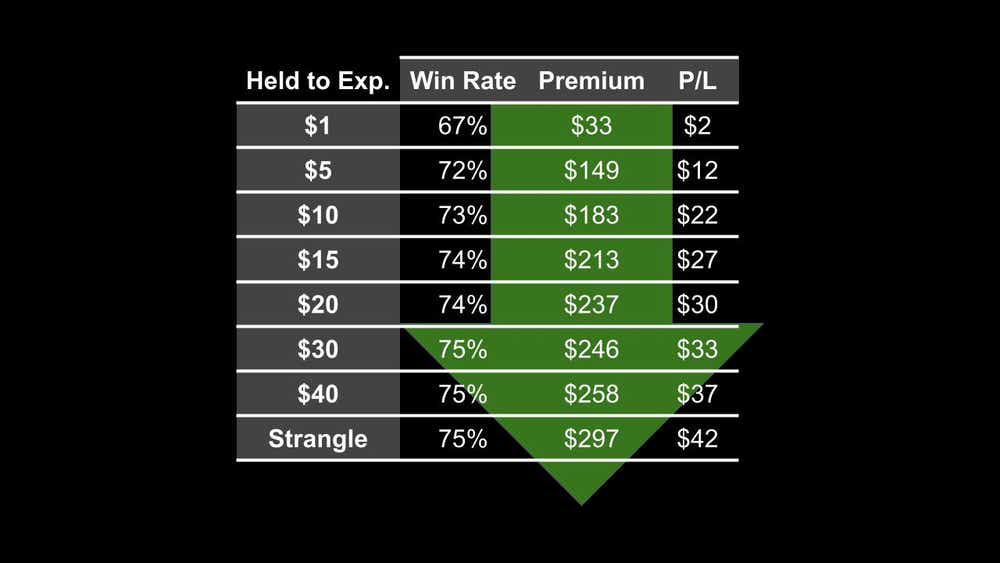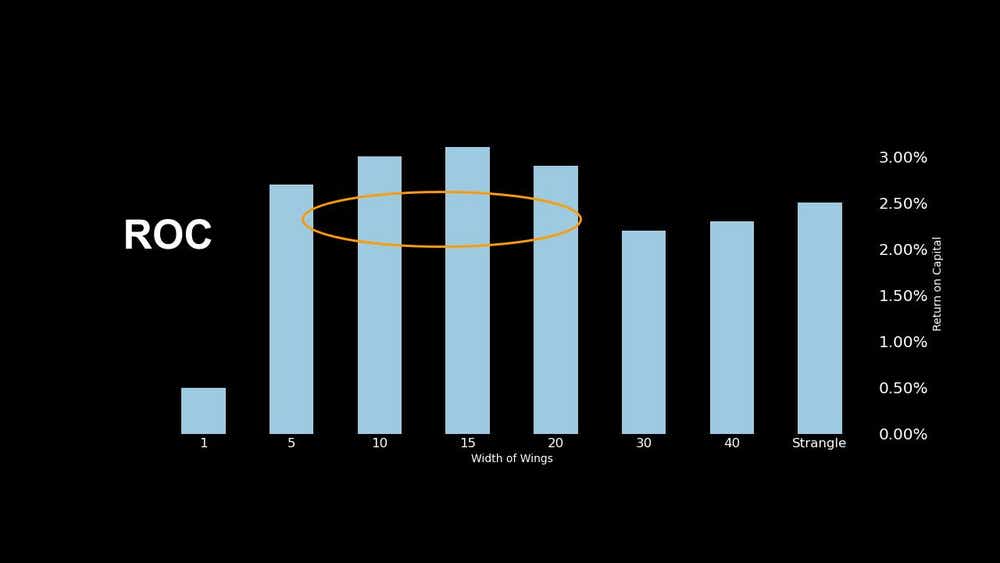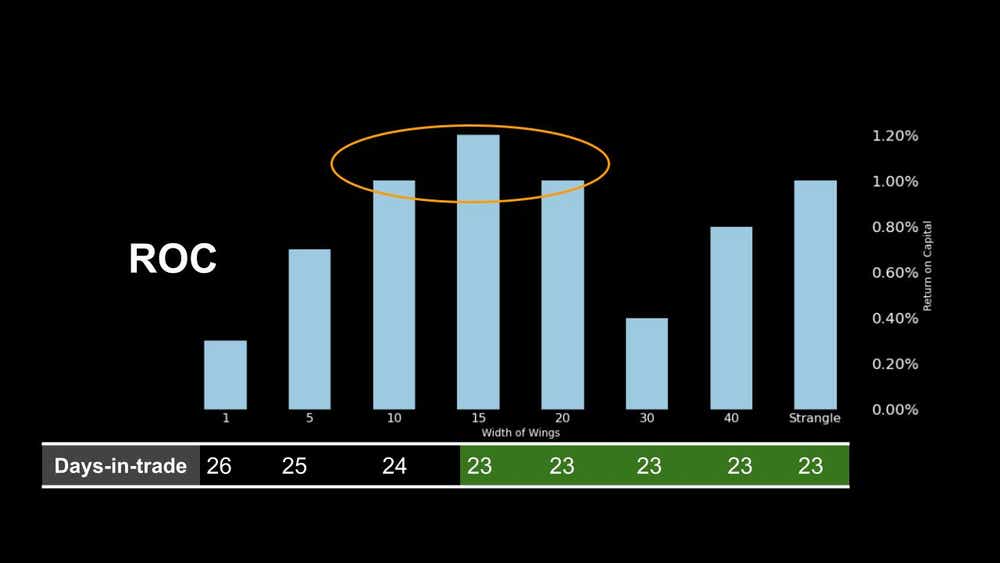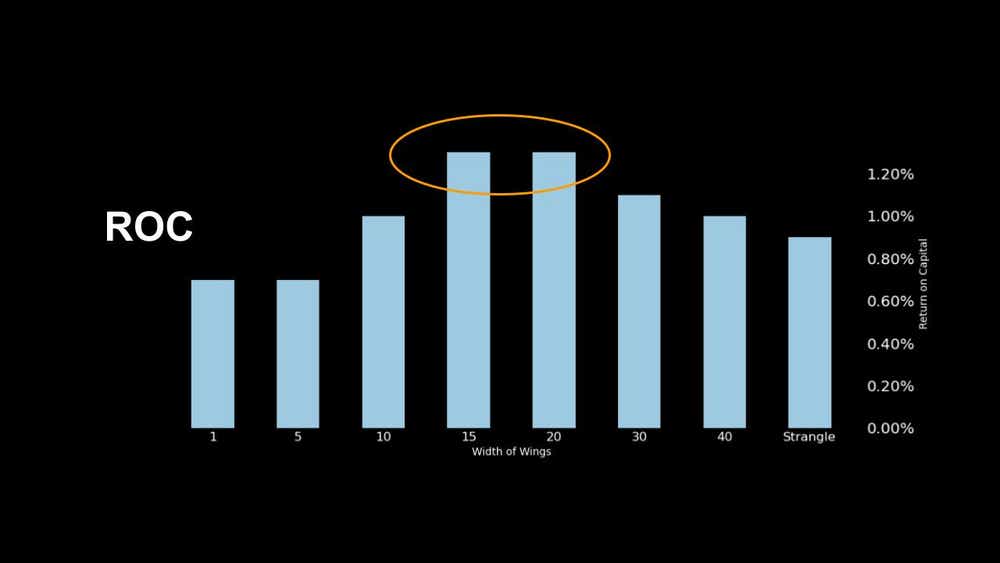Maximizing Profits: The Art of the Iron Condor Wingspan

Maximizing Profits: The Art of the Iron Condor Wingspan
By:Kai Zeng
Iron Condors with wider wings produce higher win rates. But how wide?
- Optimal Iron Condor wing width is roughly 1/10th of the stock's price.
- Iron Condors with wider wings produce higher win rates as well as shorter durations in the trade.
- Managing positions around 21 DTE will help smooth out profit/loss.
The current market is grappling with several challenges, including high inflation, rapid interest rate hikes, ongoing banking issues, a fading China economic miracle, the Russia-Ukraine conflict and more. Trading in such a market, particularly when indices are near their peak, carries potential risks that could lead to a drawdown.
To mitigate some of the risks, options traders might consider risk-defined strategies like iron condors (ICs). This popular strategy involves selling a tighter strangle and buying a wider one simultaneously in the same expiration cycle. However, the construction of the iron condor—using a technique known as "wing adjustments"—can significantly impact its performance.
The term "wingspan" refers to the width of the iron condor and plays a crucial role in its performance. By pushing long options farther, the distance between short and long strikes increases, thereby increasing the wingspan. This allows options sellers to collect higher premiums because of the cheaper debit paid on both long puts and calls.
The optimal wingspan width is a topic of debate among traders. To facilitate a comprehensive comparison, we conducted an in-depth study using 45-day-to-expiration Iron Condors on SPY (S&P 500 ETF). This involved selling 20 delta strangles and buying wings varying in width from $1 to $40.
Our findings revealed that wider wings resulted in greater credit, profit, and success rate per position. However, considering that BPRs are more expensive for larger ICs, it's more relevant to examine their ROCs.

Without any management, iron condors with wings between $10 and $20 offered the highest return on investment, balancing profitability and trading expenses if holding them to expiration.

Interestingly, when managing these iron condors at 50% of the max profit point, we observed a similar pattern: wings between $10 and $20 tended to outperform others. Furthermore, the trade duration began to stabilize once the wings exceeded $10 indicating wider wings can help traders reach the 50% mark more quickly.

Upon managing our positions at 21 DTE (days to expiration), wings between $15 and $20 stood out. Notably, managing the position early can help mitigate volatility across different iron condors and boost their performances, particularly in extreme circumstances.

All our findings lead to the conclusion that an iron condor with a wingspan of approximately $15 and $20 performs best. This may seem large, considering that most traders don’t trade $20 wide iron condors. However, our test was on SPY, a $450 stock, which is by no means a cheap choice to start with. Over the past 15 years, SPY's average price has been close to $200, around 10 times the optimal $20 wing. So, for less expensive choices, we suggest using a wingspan of 1/10 of the underlying price. For instance, with Advanced Micro Devices (AMD) trading around $100, a $10-wide iron condor would be appropriate.
In conclusion, trading iron condors can be an effective strategy for reducing risk and increasing profitability in a volatile market. The key is to find the appropriate wingspan and manage the position early to maximize returns. While it may require some tweaking and adjusting, the potential returns make it a strategy worth considering for any trader.
Kai Zeng, director of the research team and head of Chinese content at tastylive, has 20 years of experience in markets and derivatives trading. He cohosts several live shows, including From Theory to Practice and Building Blocks. @kai_zeng1
For live daily programming, market news and commentary, visit tastylive or the YouTube channels tastylive (for options traders), and tastyliveTrending for stocks, futures, forex & macro.
Trade with a better broker, open a tastytrade account today. tastylive, Inc. and tastytrade, Inc. are separate but affiliated companies.
Options involve risk and are not suitable for all investors. Please read Characteristics and Risks of Standardized Options before deciding to invest in options.